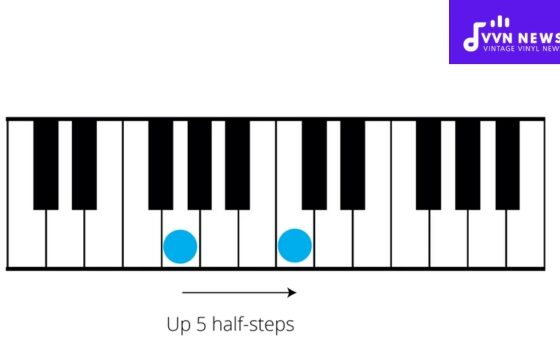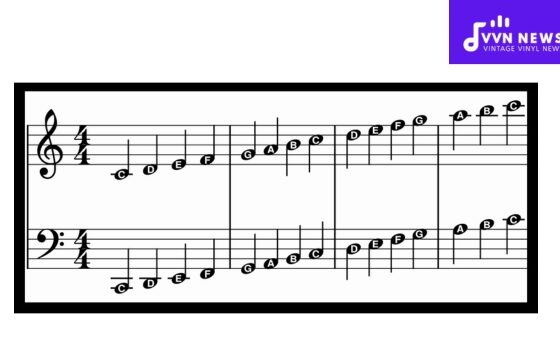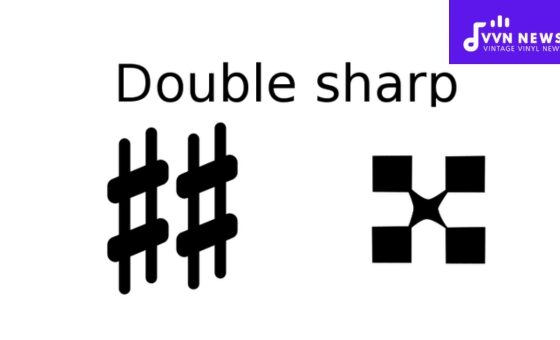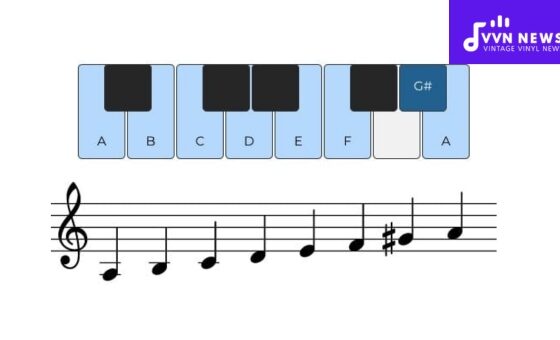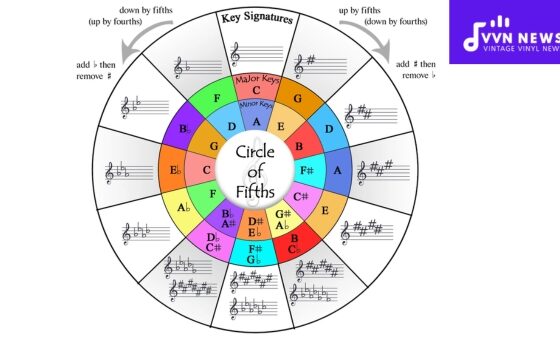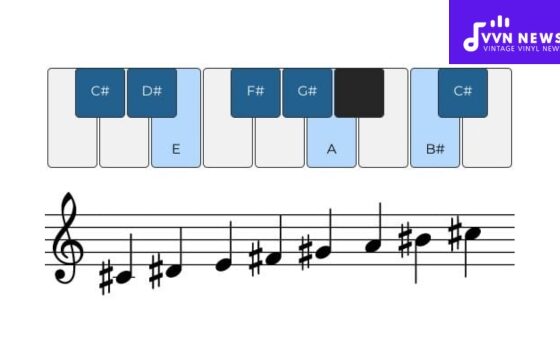If your passion for creating music has drawn you towards exploring the depths of chords, this blog post will serve as a milestone in your journey.
Welcome aboard to a comprehensive guide on D major chords, designed to help you master this fundamental aspect of music composition.
As we traverse down the charming avenues of melody and rhythm, let’s take a moment to appreciate the role of chords in our musical escapades.
Chords bring life to a barren tune, making it vibrant and emotionally resonant. In particular, D major chords lend a unique brightness and positivity often associated with joyous or triumphant moments in music.
What is a D Major Chord?
A D Major chord is a triad made up of three notes: D, F#, and A. In music theory, this chord is classified as a major chord due to the presence of a major third interval between the root note (D) and the third note (F#).
The D Major chord has a bright and uplifting sound, making it a popular choice in various musical genres, including pop, rock, and folk.
The chord is derived from the D Major scale, which consists of seven notes: D, E, F#, G, A, B, and C#.
By taking the first (D), third (F#), and fifth (A) notes of this scale, we create our beloved D Major chord.
When playing a D Major chord on guitar or piano, you can utilize different fingerings or inversions based on your comfort level and the desired sound.
The most common voicing for this chord on guitar involves placing your index finger on the second fret of the G string (root note), your ring finger on the fourth fret of the D string (third note), and your middle finger on the third fret of the B string (fifth note).
Strumming all six strings highlights the vibrant sound of the full chord.
By adopting different tensions or adding extensions like seventh or ninth intervals to this triad structure, musicians can add depth and complexity to their compositions.
What Differentiates D Major from Other Chords?
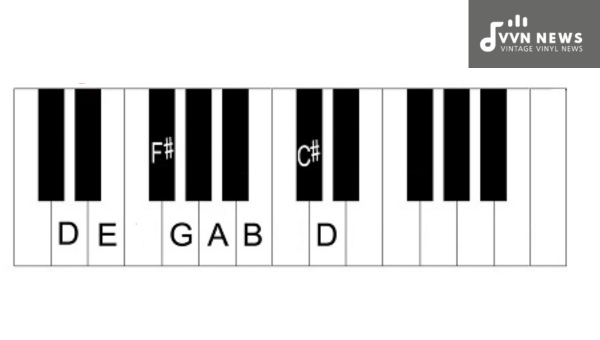
When exploring music theory, it is crucial to know the distinctions between different chords and how they contribute to the overall sound of a composition.
Let’s take a closer look at what sets the D Major chord apart from other chords.
1. The Root Note
The D Major chord is centered around the root note, D. This note serves as the foundation for the chord and determines its tonal center. The distinct sound of a D Major chord arises from this particular root note.
2. Major Third Interval
One of the defining characteristics of a major chord is the presence of a major third interval between the root note and the third note.
In the case of D Major, this interval is between D and F#. This interval creates a bright and happy quality that sets major chords apart from minor chords.
3. Perfect Fifth Interval
Another fundamental component of major triads is the perfect fifth interval between the root note and the fifth note.
In D Major, this interval exists between D and A. This perfect fifth adds stability to the chord and contributes to its full-bodied sound.
4. Contextual Differences
While all major chords share similar structural components, each one has its unique character due to its specific combination of notes.
Context plays an important role in determining how these differences manifest in actual musical compositions.
For example, comparing D Major with other major chords such as C Major or G Major reveals subtle variations in tonality and aesthetics.
The specific combination of notes within each chord creates distinct emotional qualities and can evoke different moods within a composition.
Also Read: Chords In B Major [Step By Step Guide For Guitarists]
the Structure of D Major Chords
To delve deeper into the structure of D Major chords, let’s break it down step by step:
- The root note of a D Major chord is the note from which the chord gets its name – in this case, D. It serves as the foundation and starting point for constructing the chord.
- The Major Third Interval Moving up from the root note, we encounter the major third interval – F#. This interval defines whether a chord is major or minor. In a major chord, like D Major, the major third gives it a bright and happy sound.
- The Perfect Fifth Interval Continuing up from the major third, we reach the perfect fifth interval – A. This interval provides stability to the chord and complements its harmonic structure.
- In music notation, D Major is represented by either “D” or “Dmaj”. You may come across variations like “DM” or “Dmaj7” that indicate additional notes or extensions added to the basic triad structure.
These elements allow you to visualize how a D Major chord is constructed from its fundamental components.
The Role of D Major Chords in Music Composition
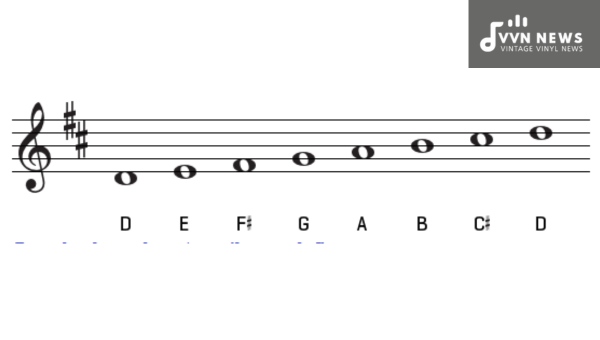
When it comes to music composition, D Major chords play a significant role in shaping the harmonic framework and emotional impact of a composition.
Let’s explore the various ways in which D Major chords contribute to the overall musical experience:
1. Stable and Rooted Sound
D Major chords, with their strong root note (D), provide a sense of stability and grounding in a composition. This stability can be beneficial when establishing key centers or anchoring harmonic progressions.
2. Bright and Uplifting Tone
The bright and uplifting sound of D Major chords makes them well-suited for creating happy musical expressions.
Composers often utilize these chords during moments of resolution or to evoke feelings of positivity and optimism.
3. Versatility Across Genres
D Major chords find their place in a wide array of musical genres including pop, rock, folk, country, and more.
The versatility of these chords allows composers to use them effectively in different styles while maintaining their characteristic sound.
4. Creating Tension and Release
While D Major chords are typically associated with a pleasant and consonant sound, they can also be employed to create tension within a composition.
By incorporating chord progressions that temporarily depart from the D Major tonality before resolving back to it, composers can enhance the emotional impact of their music.
Also Read: G Diminished Triad [Guide To Unique Guitar Chords]
5. Chord Substitutions
D Major chords serve as a basis for exploring chord substitutions within a composition. By substituting certain notes within the chord structure or replacing the entire chord with related alternatives, composers can add complexity, intrigue, and unique flavors to their compositions.
D Major chords offer stability, brightness, versatility, tension/release dynamics, and substitution possibilities within music composition.
Knowing how to effectively incorporate them into your work opens up endless possibilities for expressing emotions or creating specific moods within your musical pieces.
D Major Chord Progressions in Songwriting
Songwriters often use chord progressions as the foundation for their compositions. These progressions create a sense of movement and harmony, allowing the song to evolve and connect with listeners on a deeper level.
D Major chord progressions can add a captivating and uplifting quality to your songs. Here are some tips and ideas on how to effectively use D Major chord progressions in your songwriting.
1. Start with the Basic Progression
A common starting point for many songs is a basic D Major progression such as D – G – A. This progression, also known as the I-IV-V progression, is widely used in various genres like pop, rock, and country.
It provides a strong musical foundation and can serve as the backbone for your composition.
2. Experiment with Variations
Once you have mastered the basic D Major progression, you can experiment with variations to make your song more interesting. For example:
- Try playing inversions of the D Major chord, such as F# – A – D or A – D – F#, to create unique voicings.
- Add different passing chords between the main chords to create tension and release. For instance, inserting an Em chord before the G adds a harmonically rich transition.
- Explore different rhythmic patterns or strumming techniques to add rhythmic diversity to your progressions.
3. Combine Major and Minor Chords
To add emotional depth and variety to your compositions, consider combining D Major chords with related minor chords from the key of D Major (which include Em, F#m, and Gmaj7). This blend of major and minor tonalities can evoke different moods within your song.
Also Read: Chords In E Major [Master The Guitar With This Guide]
4. Modulations and Key Changes
Don’t be afraid to explore modulations or key changes within your song using D Major chords as a pivot point.
By transitioning to different keys, you can create tension and surprise, adding interest and dynamic range to your music.
5. Explore Different Genres
Although D Major chords are commonly used in pop and rock music, they can be applied to various genres.
Experiment with incorporating D Major progressions into genres like folk, country, jazz, or even classical music. Each genre has its characteristics that can bring a unique flavor to your compositions.
Remember that rules in music are meant to be broken! While these tips provide a starting point, the most important thing is to let your creativity flow and explore different possibilities.
By using D Major chord progressions effectively in your songwriting, you’ll be well on your way to creating captivating and memorable songs.
How D Major Chords Affect the Mood and Tone of a Composition

Music is a powerful tool for expressing emotions, and different chords can evoke specific moods and tones within a composition.
When it comes to D Major chords, the mood they create is often described as upbeat, positive, and energetic.
In this section, we will explore in detail how D Major chords affect the overall mood and tone of a composition.
1. Bright and Uplifting:
D Major chords have a naturally bright and uplifting quality. The combination of its major third interval (F#) and perfect fifth interval (A) creates a sound that resonates with joy and optimism.
When used in melodies or chord progressions, D Major chords can instantly uplift the listener’s spirits.
2. Energetic Drive:
The energetic nature of D Major chords makes them perfect for creating driving rhythms and catchy hooks.
In pop, rock, or country music, you’ll often find these chords used to establish an upbeat tempo that keeps the energy flowing throughout the song.
3. Positive Emotions:
D Major chords have a way of evoking positive emotions within listeners. The major tonality invokes feelings of happiness, hopefulness, and excitement.
It’s no wonder that many feel-good songs feature prominent D Major chord progressions to enhance their optimistic message.
Also Read: B Diminished Triad [Master This Unique Guitar Chord]
4. Versatility:
Despite primarily conveying upbeat emotions, D Major chords can be adapted to fit various musical styles or themes.
By altering the rhythm or adding different instrumentation, these chords can bring additional nuances to genres like jazz or classical music without losing their essential character.
5. Contrast and Surprise:
In music composition, the use of contrasting elements adds interest and captivates listeners’ attention; incorporating a D Major chord in a sequence where minor chords dominate adds an element of surprise that keeps audiences engaged.
By understanding how each chord impacts mood and tone, composers can intentionally use D Major chords to evoke specific emotions within their compositions.
When combined with other chords in chord progressions or layered harmonies, D Major chords can create a diverse range of emotions and lend depth to a musical piece.
Also Read: B Flat Major Chords [Master This Essential Guitar Skill]
FAQs about D Major Chords
What are the basic notes in a D Major chord?
A D Major chord consists of the notes D, F#, and A.
How do I play a D Major chord on guitar?
To play a D Major chord on guitar, you can place your index finger on the second fret of the G string, your ring finger on the fourth fret of the D string, and your middle finger on the third fret of the B string.
Can I use a different voicing for a D Major chord?
Yes! There are multiple ways to voice a D Major chord on guitar or piano. Feel free to experiment with different fingerings and inversions to find what works best for you.
Which songs commonly use D Major chords?
Many popular songs feature D Major chords, such as “Sweet Child O’ Mine” by Guns N’ Roses, “Hey Jude” by The Beatles, and “I Will Always Love You” by Whitney Houston.
Are there any common chord progressions involving D Major?
Yes, some common chord progressions involving D Major include the I-IV-V (D-G-A) progression and variations like the I-IV-vi-V (D-G-Bm-A) progression commonly found in pop music.
Conclusion
Mastering D Major chords opens up a world of possibilities for musicians.
By grasping the construction and structure of D Major chords, you can confidently incorporate them into your musical creations.
Whether strumming along to your favorite songs or composing original tunes, the bright and uplifting sound of D Major chords will add depth and richness to your music.
So grab your instrument and start exploring the harmonic potential of D Major chords today!

